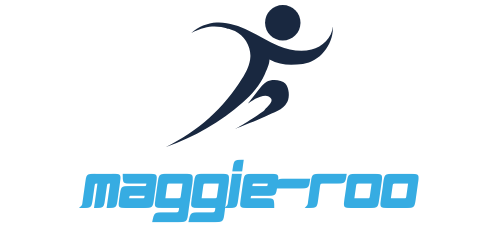Table of Contents
ToggleIn today’s fast-paced digital world, a tech use policy isn’t just a good idea; it’s a necessity. Imagine a workplace where everyone’s glued to their screens, oblivious to the chaos around them. It’s like a scene from a sci-fi movie—minus the cool robots. A well-crafted tech use policy can transform that chaos into harmony, guiding employees on how to navigate the digital landscape without turning into tech zombies.
Overview Of Tech Use Policy
Establishing a tech use policy serves as a crucial framework for organizations navigating modern technology. This document outlines appropriate behaviors and expectations related to technology use in the workplace. It encourages employees to use technology responsibly while promoting productivity and well-being.
A tech use policy typically covers several key elements. First, it clarifies acceptable use of devices such as computers, smartphones, and tablets. Second, it addresses internet usage, including restrictions on accessing inappropriate content. Third, it encompasses social media guidelines to maintain professional conduct online.
Companies should also emphasize the importance of data security. Employees must understand how to protect sensitive information from unauthorized access. Regular training on cybersecurity best practices enhances awareness and reduces risks.
Monitoring technology use can further contribute to a positive environment. Organizations often implement measures to evaluate usage patterns without infringing on privacy. This approach allows managers to identify potential issues and respond accordingly.
Feedback mechanisms play a vital role in improving the tech use policy. Employees should feel encouraged to provide input regarding the effectiveness of the policy and suggest improvements. Incorporating this feedback fosters a collaborative atmosphere.
Regular review and updates of the tech use policy are crucial to align with evolving technology trends and workplace dynamics. By staying current, organizations ensure that their policy remains relevant and effective. Adopting a structured tech use policy ultimately promotes a balanced and productive workplace where technology serves as an aid rather than a distraction.
Importance Of Tech Use Policy

Tech use policies play a critical role in guiding employee behavior in a digital workspace. These guidelines help organizations manage technology effectively and responsibly.
Protecting User Privacy
User privacy remains a key concern in today’s digital landscape. A robust tech use policy outlines how organizations handle personal data, ensuring compliance with regulations like GDPR and HIPAA. Clear protocols inform employees about data sharing practices and monitoring measures. When users know their privacy is prioritized, trust in the organization increases. Transparent communication about data collection and usage builds a safer environment for everyone.
Encouraging Responsible Use
Responsible technology use fosters a positive workplace culture. Tech use policies define acceptable and unacceptable behaviors related to device usage, internet browsing, and social media engagement. Employees benefit from clear expectations, reducing misuse and distractions. Publicly sharing guidelines encourages accountability among staff members. Training sessions on policy adherence strengthen understanding and compliance. As employees embrace responsible use, overall productivity in the workplace improves significantly.
Key Components Of Tech Use Policy
A comprehensive tech use policy establishes essential guidelines for effective technology management. These components enhance workplace productivity and security within a digital environment.
Acceptable Use Guidelines
Acceptable use guidelines set clear expectations for employees regarding technology use. They outline appropriate behaviors related to device usage, internet access, and social media. These guidelines define what constitutes acceptable online activities, promoting professional conduct and minimizing distractions. Monitoring compliance ensures that employees engage with technology responsibly. By clarifying permissible and impermissible actions, organizations reduce the risk of misuse and foster a focused workspace.
Security Measures
Security measures are critical in protecting sensitive organizational data. Policies must include robust protocols for data protection, ensuring secure passwords and encryption. Regular training sessions enhance employee awareness about potential cybersecurity threats. Protecting personal information requires compliance with regulations like GDPR and HIPAA. These measures establish protocols for data sharing and monitoring, promoting trust within the organization. Organizations should review these security measures frequently to adapt to evolving threats and enhance overall data security.
Implementing A Tech Use Policy
Implementing a tech use policy requires organization and clarity throughout the process. Training and awareness programs play a key role in ensuring employee adherence to the guidelines.
Training and Awareness Programs
Training programs educate employees on the policy and its significance. Sessions should cover acceptable use, data security, and best practices. Engaging materials help reinforce concepts. Awareness initiatives, such as workshops or online modules, keep technology use front of mind. Continuous education promotes safe behaviors and updates employees about emerging threats. Feedback from participants can guide future training efforts.
Monitoring and Enforcement
Monitoring technology use helps identify compliance levels within the organization. Regular audits can reveal problematic behaviors, enabling proactive management. Communicating clear consequences for policy violations fosters accountability. Surveillance tools might assist in monitoring activities without infringing on privacy. Consistent enforcement ensures all employees understand the importance of the policy. Adjustments can be made based on observed trends to keep the environment safe and productive.
Challenges Of Tech Use Policy
Tech use policies face several challenges in implementation and adherence. Organizations must navigate the fine line between accessibility and security while ensuring employees understand their responsibilities and the associated risks.
Balancing Accessibility and Security
Organizations strive to maintain a flexible work environment. Balancing the need for easy access to technology with robust security measures becomes essential. Employees require the ability to work efficiently, yet security breaches pose significant risks. Policies should define clear guidelines on acceptable use without restricting productivity. Employees benefit from training programs that emphasize both accessibility and security principles. Regular assessments help identify vulnerabilities, allowing organizations to adjust policies accordingly.
Keeping Up With Technological Changes
Technological advancements occur rapidly, posing a consistent challenge for tech use policies. Organizations face the need to adapt guidelines in response to new technologies, applications, and threats. Employees often introduce innovations to their workflows, which may not align with existing policies. Continuous education keeps teams informed about emerging technologies and their implications. Regular reviews of tech use policies ensure alignment with industry trends and standards. Stakeholder feedback contributes to creating a dynamic policy that evolves with the organization’s needs.
A well-crafted tech use policy is essential for fostering a balanced workplace in today’s digital landscape. By clearly defining acceptable behaviors and emphasizing security measures, organizations can guide employees in using technology responsibly. Regular training and feedback mechanisms ensure that the policy remains relevant and effective.
As technology continues to evolve, so too must the policies governing its use. Organizations that prioritize continuous education and regular updates will cultivate an environment where technology enhances productivity rather than detracts from it. Ultimately, a robust tech use policy not only protects sensitive data but also promotes a positive workplace culture, setting the stage for success in a tech-driven world.








